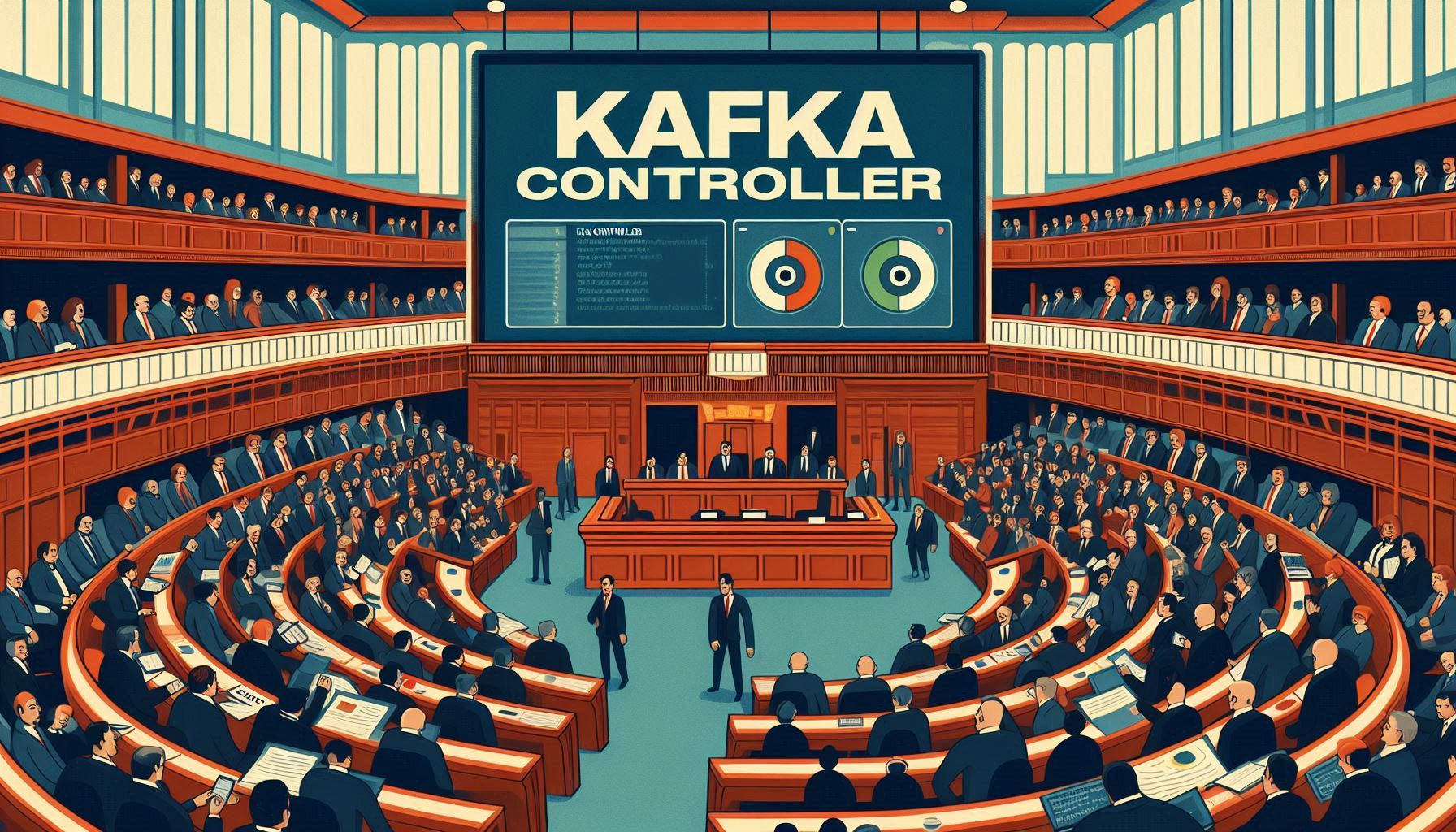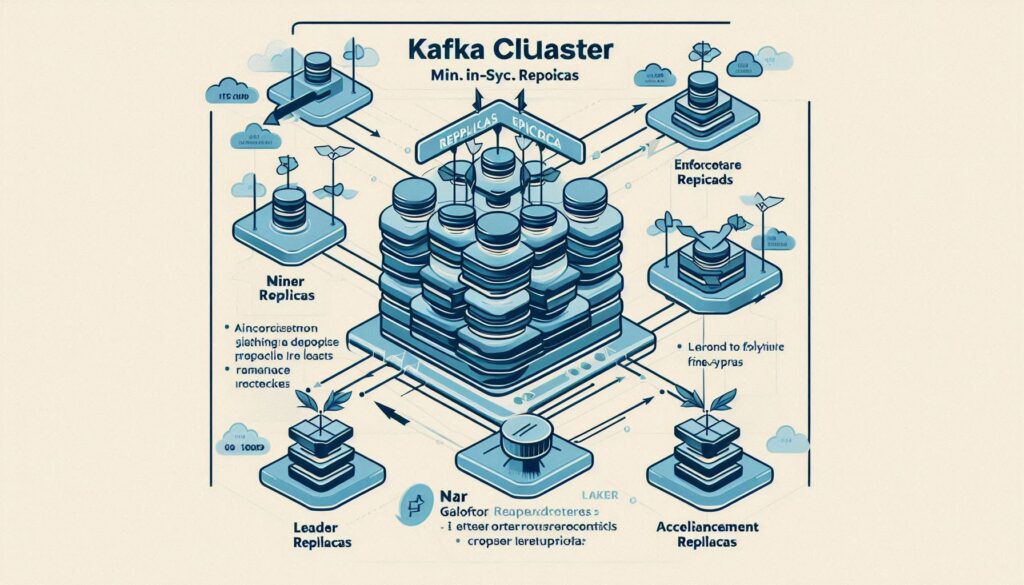Apache Kafka‘s Controller and Broker election process ensures that the cluster remains operational and partitions maintain availability. This process involves selecting a controller broker to manage metadata and electing partition leaders to handle read and write requests. Understanding these mechanisms allows administrators to design Kafka clusters for reliability and high availability.
This article describes the Kafka Controller and Broker election process, explains its components, and provides best practices for efficient cluster management.
TL;DR
- Kafka elects one controller broker to manage metadata and perform partition leader elections.
- ZooKeeper facilitates the election process by storing metadata and monitoring broker availability.
- Partition leaders manage read and write operations, while followers replicate data.
- Design clusters with an odd number of ZooKeeper nodes and monitor controller failover to ensure stability.
Kafka Controller Election
The Kafka Controller is a special broker that manages cluster metadata and orchestrates partition leader elections. Kafka automatically elects a controller broker during cluster initialization or when the current controller fails.
Election Mechanism
- Controller Path in ZooKeeper:
Kafka creates a/controllerznode in ZooKeeper. Brokers attempt to write their ID to this znode. - First Write Wins:
The broker that successfully writes its ID becomes the controller. - Watchers:
ZooKeeper notifies brokers when the/controllerznode changes, triggering a new election if the current controller fails.
Command to Check Current Controller:
kafka-broker-api-versions.sh --bootstrap-server <BROKER_LIST> | grep "controller" Example Output:
NodeId: 2, Controller: true, EndPoint: localhost:9093 Responsibilities of the Kafka Controller
- Partition Leader Election:
The controller assigns leaders for partitions when the cluster starts or a broker fails. - Metadata Management:
It updates and synchronizes metadata across brokers, including information about topics, partitions, and replicas. - Cluster State Monitoring:
The controller tracks the availability of brokers and initiates failover when necessary.
Kafka Broker Election Process
In Kafka, brokers function as nodes that store and serve data. Each broker handles specific partitions as a leader or follower. Kafka ensures that leaders are distributed evenly across brokers to optimize performance.
Leader Election Mechanism
- Leader Assignment:
- The controller assigns one broker as the leader for each partition.
- Other brokers in the replica set become followers.
- ISR (In-Sync Replicas):
- Only brokers in the ISR can become leaders.
- Kafka prioritizes maintaining consistency by ensuring that all ISR members replicate data from the leader.
Command to Describe Topic Partitions:
kafka-topics.sh --describe --topic <TOPIC_NAME> --bootstrap-server <BROKER_LIST> Example Output:

Read also: Kafka Consumers and Partitions: Why Can’t You Have More Consumers Than Partitions?
Failover and Recovery
Controller Failover
When the controller broker fails, ZooKeeper notifies all brokers. The remaining brokers compete to write their ID to the /controller znode, and the winner becomes the new controller.
Partition Leader Failover
When a partition leader fails, the controller assigns a new leader from the ISR. This process ensures minimal disruption to data availability.
Best Practices for Managing Controller and Broker Elections
- Use an Odd Number of ZooKeeper Nodes:
An odd number of ZooKeeper nodes improves fault tolerance and ensures consistent elections. - Monitor Controller Failover:
Use monitoring tools like Prometheus and Grafana to track controller changes and broker availability. - Distribute Partition Leaders Evenly:
Configure replication factors and partition assignments to balance leader roles across brokers. - Ensure Sufficient ISR Members:
Maintain a healthy ISR to avoid availability issues during leader failover. - Automate Recovery:
Implement scripts or tools to automate broker restarts and partition reassignment during failures.
Common Issues in Kafka Elections
1. Frequent Controller Changes
- Cause: Unstable brokers or ZooKeeper nodes.
- Solution: Stabilize the cluster by optimizing broker configurations and monitoring ZooKeeper.
2. Partition Leadership Imbalance
- Cause: Uneven distribution of partitions across brokers.
- Solution: Reassign partitions to balance the load using the Kafka Reassign Partitions tool.
3. ISR Shrinking
- Cause: Slow replicas lag behind the leader.
- Solution: Investigate network or disk I/O bottlenecks and optimize broker performance.
Example Scenario
Problem:
A Kafka cluster with five brokers experiences frequent controller failovers, resulting in metadata synchronization delays.
Solution:
- Stabilize ZooKeeper by ensuring there are always an odd number of servers.
- Monitor controller transitions using JMX metrics.
- Redistribute partition leadership to balance load across brokers.
Reference Links
- Apache Kafka Documentation: Controller Election
- Apache Kafka GitHub Repository
- ZooKeeper Documentation




